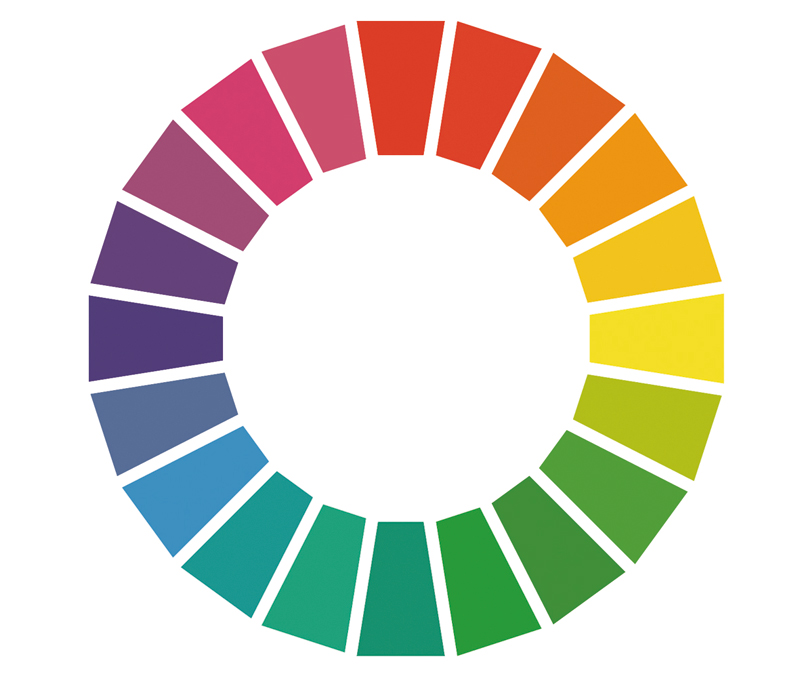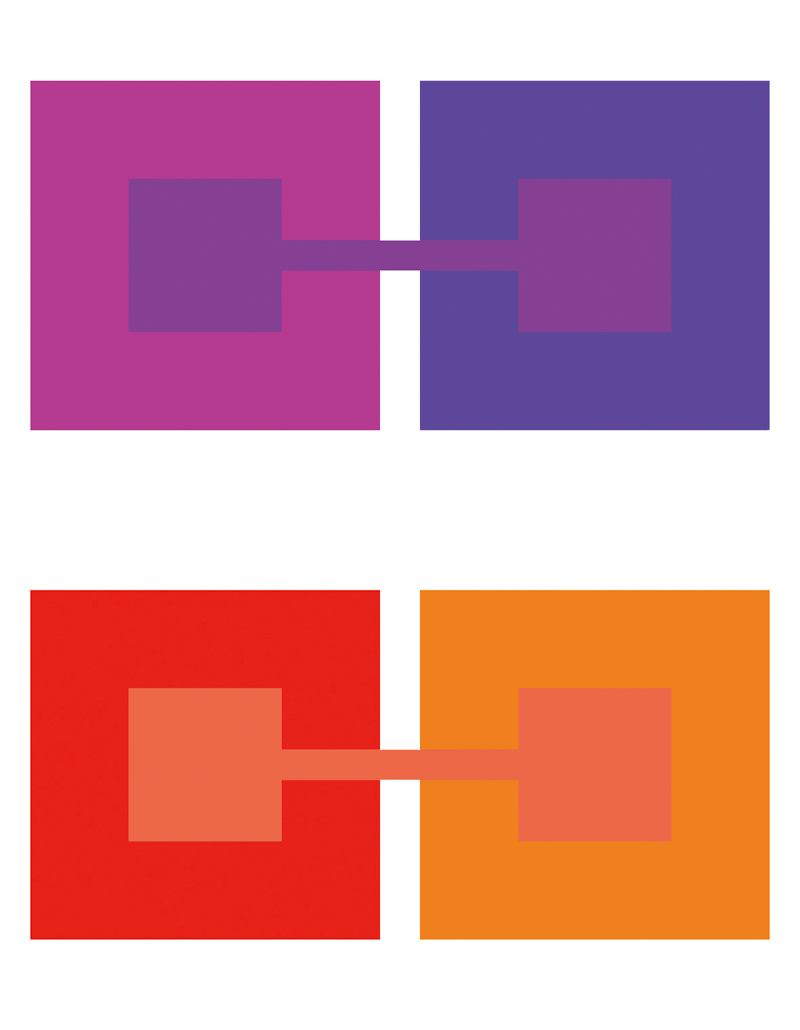Hues
色相
Shikisou
CATEGORIES
Hues are tints such as red, yellow, green and blue that define color and are one of its three attributes (hue, value and intensity). Tints vary in different light wavelengths.
Light is an electromagnetic wave. If it is of a wavelength in the spectrum that humans can detect, that light is said to be visible. Visible light incorporates different wavelengths and it is these that enable us to detect hues such as red and blue, which define color. We can perceive the successive change through red, orange, yellow, green, blue and purple from the different wavelengths (red being the longest) and are able to express these in a color circle. An achromatic color has no hue.
The appearance of a color is affected by the color that adjoins it. If colors of different hues are lined up together, they will differ in their appearance. This is called hue contrast. For example, two hue contrast charts have the same hues on the inner area but they look different because of the difference in hues on the outer area.
* The chart shown is only an approximate display of the relationship between colors and is not an accurate recreation. Colors also appear different depending on the viewing environment.
 Munsell color circle
Munsell color circle Hue contrast
Hue contrast
